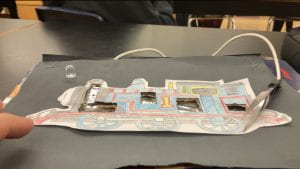For over a century, residential schools inflicted lasting harm on Indigenous peoples in Canada, tearing families apart and attempting to erase cultures. This dark chapter left deep scars that continue to affect survivors and their communities today. Beginning in the 1980s, survivors and advocates pushed for justice, leading to monumental steps like government apologies, compensation programs, and support for healing. These actions, though significant, are only part of the broader journey toward reconciliation and healing.
In the 1940s and 1950s, government researchers used malnourished children in residential schools to study the effects of starvation. These children were deliberately denied adequate food and essential vitamins while their health was monitored. This unethical experimentation highlights the systemic disregard for Indigenous lives and the long-lasting trauma inflicted on survivors.
Residential schools were government-funded, church-operated institutions established in the late 19th century to forcibly assimilate Indigenous children into Euro-Canadian culture. Children were removed from their families, forbidden from speaking their languages, and subjected to physical, emotional, and often sexual abuse. Thousands died due to neglect, malnutrition, or mistreatment, and the schools left lasting intergenerational trauma within Indigenous communities.
This history matters because the impacts of residential schools are not just in the past—they continue to shape the lives of Indigenous peoples today. Acknowledging this dark legacy is crucial for healing, rebuilding trust, and fostering reconciliation. Addressing these injustices helps create a more equitable society where the voices and rights of Indigenous peoples are respected and upheld.
Seeking Justice: 1980s Former Students Demand Action
In the 1980s, former students began advocating for recognition and compensation from the government and churches for past abuses they endured in institutions like residential schools. These students demanded accountability for the harm caused and worked to ensure their stories were heard and addressed. Their efforts laid the groundwork for broader awareness and justice initiatives.
Key Points:
• Former students called for acknowledgment of institutional abuse.
• Demands included compensation and formal apologies.
• Advocacy efforts shaped future reparative justice policies.
Steps Toward Healing: 1998 Statement of Reconciliation
In 1998, the Canadian government issued a Statement of Reconciliation, formally acknowledging the harm caused by residential schools and other policies. Alongside this, it established the Aboriginal Healing Foundation to support Indigenous communities in their healing journeys. These initiatives marked significant steps toward addressing historical injustices and fostering reconciliation.
Key Points:
• The government admitted past wrongs in the Statement of Reconciliation.
• The Aboriginal Healing Foundation was created to fund community-led healing programs.
• These efforts aimed to repair trust and support Indigenous well-being.
Addressing Harm: 2003 Alternative Dispute Resolution
In 2003, the Alternative Dispute Resolution (ADR) process was introduced to address the legacy of residential schools. This system provided a structured way to determine compensation for survivors and offered psychological support to aid in their recovery. The ADR aimed to deliver justice while avoiding lengthy court battles, prioritizing survivor well-being.
Key Points:
• ADR provided a streamlined process for survivors to seek compensation.
• Psychological support services were included to assist in healing.
• It emphasized resolving claims efficiently and respectfully.
Historic Agreement: 2007 IRSSA Approved
In 2007, the Indian Residential Schools Settlement Agreement (IRSSA) was approved, allocating $1.9 billion for survivor compensation. This landmark agreement was the largest class-action settlement in Canadian history and provided financial reparations to those who endured abuse in residential schools. The IRSSA also supported healing, truth-telling, and reconciliation efforts.
Key Points:
• $1.9 billion was allocated for survivor compensation.
• It marked the largest class-action settlement in Canadian history.
• The agreement included funding for reconciliation and healing initiatives.
From the 1980s to 2007, significant steps were taken to address the harms of residential schools. Former students began advocating for recognition and compensation, leading to the 1998 Statement of Reconciliation and the creation of the Aboriginal Healing Foundation. In 2003, the Alternative Dispute Resolution (ADR) process provided survivors with compensation and psychological support. This progress culminated in the 2007 approval of the Indian Residential Schools Settlement Agreement (IRSSA), which allocated $1.9 billion for survivor reparations—the largest settlement in Canadian history.
The journey toward healing is ongoing, and reconciliation requires everyone’s participation. Educate yourself about the history of residential schools and their lasting impact. Support organizations dedicated to Indigenous healing and justice, and amplify the voices of survivors. Together, we can build a future grounded in understanding, respect, and accountability.





















